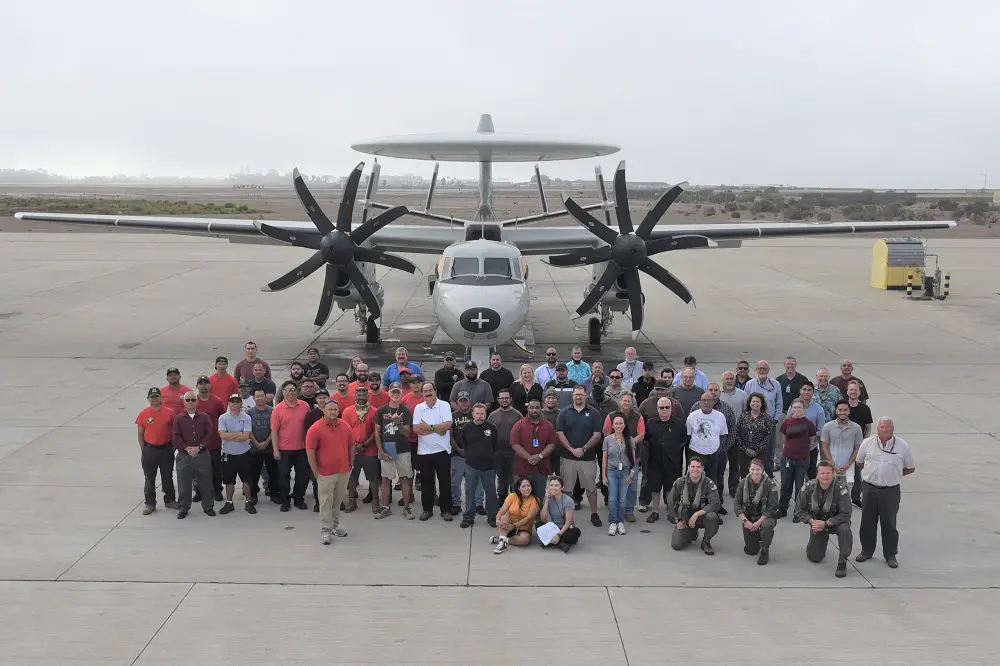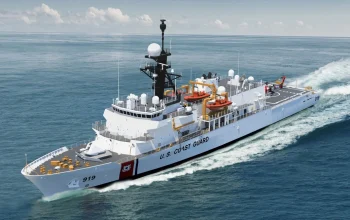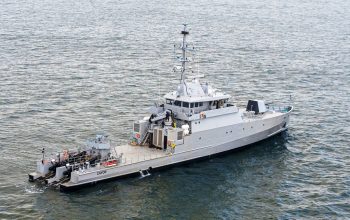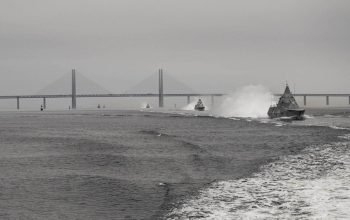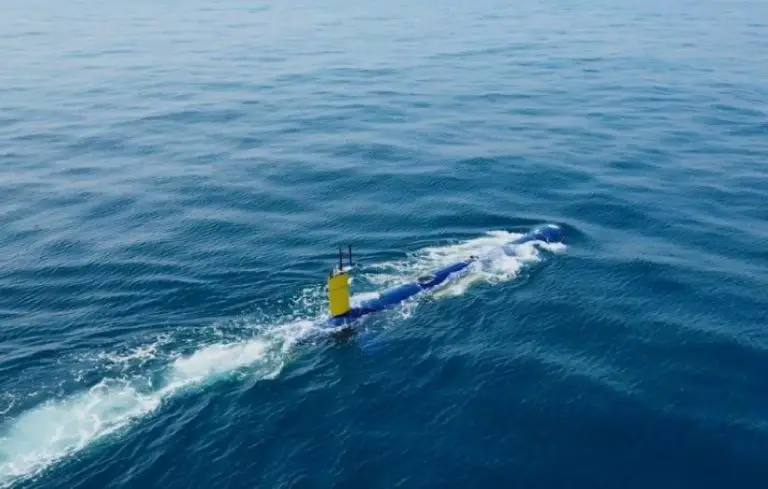The last E-2C Hawkeye to complete the planned maintenance interval two (PMI-2) procedure at Fleet Readiness Center Southwest (FRCSW) departed the command’s test line August 3 to Carrier Airborne Early Squadron 116 (VAW-116) stationed at Naval Base Ventura County. Developed by the Grumman Aircraft Company in the mid-1960s, the twin turbo-propeller E-2 Hawkeye and its sister airframe, the C-2A Greyhound transport, still serve aboard naval aircraft carriers. The aircraft was inducted Sept. 21, 2020, from VAW-123.
During PMI-1, artisans assess the attachment points of the flight control surfaces on the body of the aircraft, the engines, and other areas identified in the maintenance specification. Sheet metal repairs are made and worn parts replaced. FRCSW is the Navy’s sole provider of PMI-2 events to the airframe, and employs approximately 120 artisans and 53 indirect support personnel. Though not a complete overhaul, PMI-2 is a substantial disassembly of the aircraft down to the fuselage. Artisans remove the aircraft’s wings, engines, landing gear and tail.
Production of the airborne early warning system (AEWS) E-2C variant began in 1973. With its detachable 24-foot diameter rotodome radar system, the Hawkeye’s ability to guard against airborne threats remains the standard for protection of naval carrier battle groups to this day. FRCSW performs two levels of scheduled maintenance on the airframe: PMI-1, or a light maintenance interval at FRCSW’s Site Pt Mugu and FRC Mid-Atlantic, and PMI-2, or a heavy maintenance which is handled at FRCSW’s Building 460 onboard Naval Air Station North Island (NASNI).
By using chemical or physical means, the aircraft’s corrosion preventive paint is removed and an in-depth metal assessment is performed to locate surface anomalies like cracks, corrosion, exfoliation and missing fasteners. PMI-2 procedures are completed under a project management method called the Critical Chain Project Management (CCPM) program. CCPM designates resources — like people and equipment — needed to complete a task in a specific amount of time. A software program called “Concerto™” is used to manage the aircraft’s throughput as well as multiple CCPM projects.
The E-2 CCPM throughput is divided into four procedures: induction, repair, assembly and test line. Each step has a targeted completion time for a total of about 220 days, depending on material availability. The command will continue to support the maintenance requirements of the airframe as the Navy transitions to the technologically advanced E-2D, the fourth variant that will replace the E-2C. FRCSW delivered its first E-2D Hawkeye to complete PMI-2 last January.
